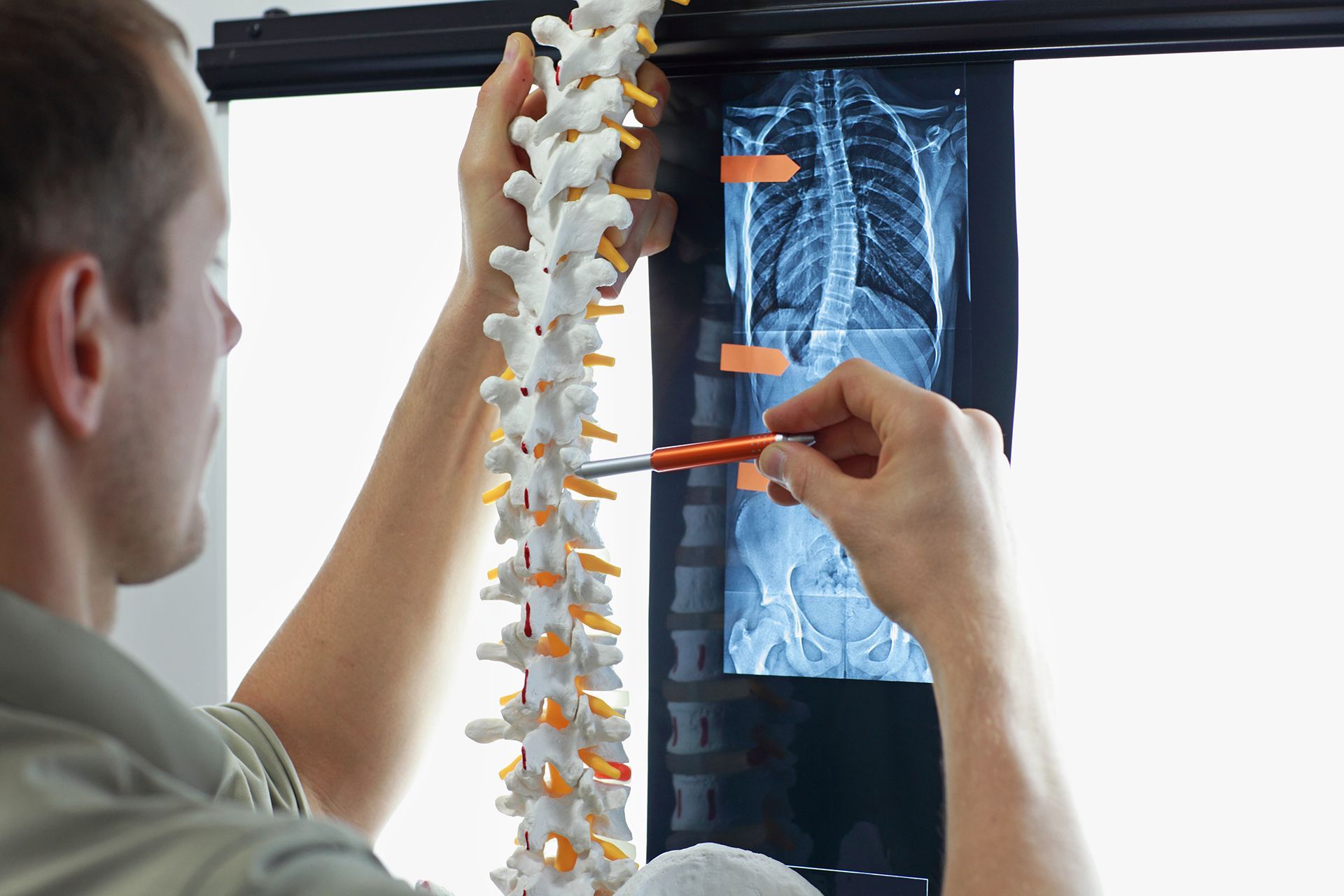The thoracic spine, comprising the middle segment of the vertebral column, plays a critical role in posture, breathing mechanics, and upper body movement. When this region becomes restricted or misaligned, it can lead to persistent mid-back discomfort, reduced flexibility, and even referred pain into the chest or shoulders. At the office of Lynn B. Pownall DC, DACNB in Jamestown, NY, thoracic spine care is centered on restoring joint motion, relieving soft tissue tension, and improving spinal alignment to support optimal neurological function.
Anatomy and Function of the Thoracic Spine
The thoracic spine includes 12 vertebrae labeled T1 through T12. It connects the cervical spine above and the lumbar spine below, forming the structural foundation of the upper torso. Each thoracic vertebra is attached to a pair of ribs, which form the ribcage and protect vital organs. The thoracic region is less mobile than the cervical and lumbar areas due to its rib attachments, but it is essential for upright posture, rotation, and stabilization during upper body movement.
Load Distribution and Postural Support
The thoracic spine helps distribute loads across the back and upper body. It supports shoulder motion and plays a key role in maintaining balance. Prolonged sitting, poor posture, or repetitive movements can create dysfunction in this area, leading to stiffness, muscular imbalance, and altered spinal curves.
Common Thoracic Conditions Treated
Thoracic Joint Fixation
When vertebrae in the thoracic region become hypomobile, or restricted in movement, it can result in a sense of tightness, reduced rotation, or pain during breathing or twisting. Chiropractic adjustments are used to restore normal joint motion, alleviate discomfort, and enhance thoracic mobility.
Postural Kyphosis
Postural kyphosis refers to an exaggerated forward rounding of the upper back, often seen in individuals who work at desks or sit for extended periods. This condition can contribute to shoulder strain, neck tension, and impaired respiratory function. Chiropractic care addresses the underlying misalignment while guiding patients toward better postural control and spinal positioning.
Rib Articulation Dysfunction
Because each thoracic vertebra is connected to a pair of ribs, dysfunction in the thoracic spine can also affect rib motion. Rib misalignment may cause sharp pain, especially when breathing deeply, coughing, or bending sideways. Manual rib adjustments and thoracic mobilization are used to restore rib cage mechanics and relieve discomfort.
Intercostal Muscle Irritation
The intercostal muscles between the ribs can become strained during physical activity or following trauma. This may mimic internal organ pain or cause discomfort that wraps around the chest wall. Chiropractic care helps reduce muscular tension and addresses any underlying joint dysfunction contributing to muscle strain.
Chiropractic Assessment of the Thoracic Region
During evaluation, Dr. Pownall examines the thoracic spine for restricted motion, muscle tension, postural abnormalities, and neurological deficits. Spinal palpation, range of motion testing, and orthopedic maneuvers are used to localize joint fixation or muscular imbalance. As a Diplomate of the American Chiropractic Neurology Board (DACNB), she also performs functional neurological evaluations to assess sensorimotor function that may be influenced by thoracic dysfunction.
Treatment Techniques for Thoracic Spine Care
Thoracic Adjustments
Manual adjustments are applied to thoracic vertebrae to correct joint fixation, reduce spinal stiffness, and improve motion. These techniques are performed with specificity and control, tailored to the patient’s anatomy and comfort level. Adjustments to this region often provide noticeable relief from mid-back tension and facilitate improved breathing mechanics.
Rib Cage Mobilization
When rib movement is restricted, chiropractic care targets the costo-vertebral joints where ribs meet the spine. Mobilization techniques improve rib motion, reduce pain on inhalation, and alleviate the sensation of pressure in the chest wall. Rib alignment also plays a key role in shoulder mechanics and upper back posture.
Soft Tissue and Myofascial Release
Muscles such as the trapezius, rhomboids, and paraspinals can become overactive in response to thoracic dysfunction. Soft tissue therapy is used to release muscle adhesions, improve circulation, and support spinal realignment. Trigger point therapy and stretching techniques help reset muscle tone and restore flexibility.
Postural Correction Strategies
Long-term relief from thoracic pain often depends on improving postural habits. Patients are provided with guidance on workplace ergonomics, sleeping positions, and corrective exercises. These strategies are used to strengthen the upper back and prevent the recurrence of spinal misalignment.
Respiratory Function and Thoracic Mobility
Because of its relationship with the rib cage and diaphragm, the thoracic spine also influences breathing efficiency. Joint restriction or muscular tightness in this region can impair respiratory expansion. By improving thoracic mobility, chiropractic care supports fuller, more natural breathing patterns that enhance both athletic performance and overall wellness.
Localized Thoracic Care in Jamestown, NY
Lynn B. Pownall DC, DACNB offers detailed chiropractic care for thoracic spine conditions to patients in Jamestown and across Chautauqua County. Her comprehensive approach addresses joint misalignment, rib cage dysfunction, and postural imbalance through spinal adjustments and neuromuscular integration. Whether managing pain from poor posture, injury, or thoracic rigidity, patients receive targeted care designed to restore function and support long-term spinal health.



